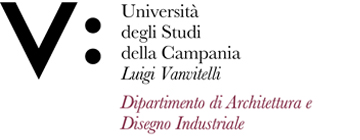Maria GELVI
Insegnamento di ARCHITECTURAL DESIGN
Corso di laurea magistrale in ARCHITETTURA - PROGETTAZIONE DEGLI INTERNI E PER L'AUTONOMIA
SSD: ICAR/14
CFU: 12,00
ORE PER UNITÀ DIDATTICA: 96,00
Periodo di Erogazione: Primo Quadrimestre
Italiano
| Lingua di insegnamento | INGLESE |
| Contenuti | Il Corso rivolto a una classe proveniente da differenti indirizzi e percorsi eterogenei si propone di affrontare il tema dell’abitare domestico e della residenza attraverso un’applicazione progettuale a diverse scale di rappresentazione, a partire dall’analisi del dato urbano per giungere al progetto architettonico nelle sue e più ampie accezioni. |
| Testi di riferimento | Le Corbusier, Vers une architecture, Longanesi, Milano, 1973 (Vers une architecture 1923) |
| Obiettivi formativi | Il senso critico e la capacità di indagine diverranno strumenti amplificati e fondamentali per la comprensione e individuazione dei dati reali, sia in termini qualitativi che quantitativi, eletti a elementi sostanziali per la costruzione di un sistema abitativo coerente con le necessità dell’abitante contemporaneo. |
| Prerequisiti | Conoscenza di base della geometria elementare |
| Metodologie didattiche | Le metodologie didattica sono diverse, principalmente improntate su lezioni di didattica frontale sia teoriche che pratiche e sul lavoro in aula del singolo o di gruppo, azioni utili allo sviluppo del tema. Momenti di cooperative learning e flipped class si alterneranno nel tempo per implementare la partecipazione alle attività proposte. |
| Metodi di valutazione | La valutazione è data dalla media dei risultati delle prove intercorso (almeno 2) e dagli esiti della prova finale che consiste in un colloquio orale e nello sviluppo progettuale del tema assegnato. |
| Programma del corso | prova d’ingresso per autovalutazione competenze acquisite |
English
| Teaching language | English |
| Contents | The course aimed at a class coming from different addresses and heterogeneous paths aims to address the theme of domestic living and residence through a design application at different scales of representation, starting from the analysis of the urban data to arrive at the architectural project in its broadest meanings. |
| Textbook and course materials | Le Corbusier, Vers une architecture, Longanesi, Milan, 1973 (Vers une architecture 1923) |
| Course objectives | The critical sense and the ability to investigate will become amplified and fundamental tools for understanding and identifying real data, both in qualitative and quantitative terms, elected as substantial elements for the construction of a housing system consistent with the needs of the contemporary inhabitant. |
| Prerequisites | Basic knowledge of elementary geometry |
| Teaching methods | The teaching methodologies are different, mainly based on frontal teaching lessons both theoretical and practical and on the work in the classroom of the individual or group, actions useful for the development of the theme. Moments of cooperative learning and flipped class will alternate over time to implement participation in the proposed activities. |
| Evaluation methods | The evaluation is given by the average of the results of the exams passed (at least 2) and by the results of the final exam which consists of an oral interview and the project development of the assigned topic. |
| Other information | manuals and teaching materials in digital format will be made available to the class |
| Course Syllabus | entry test for self-assessment of acquired skills |








